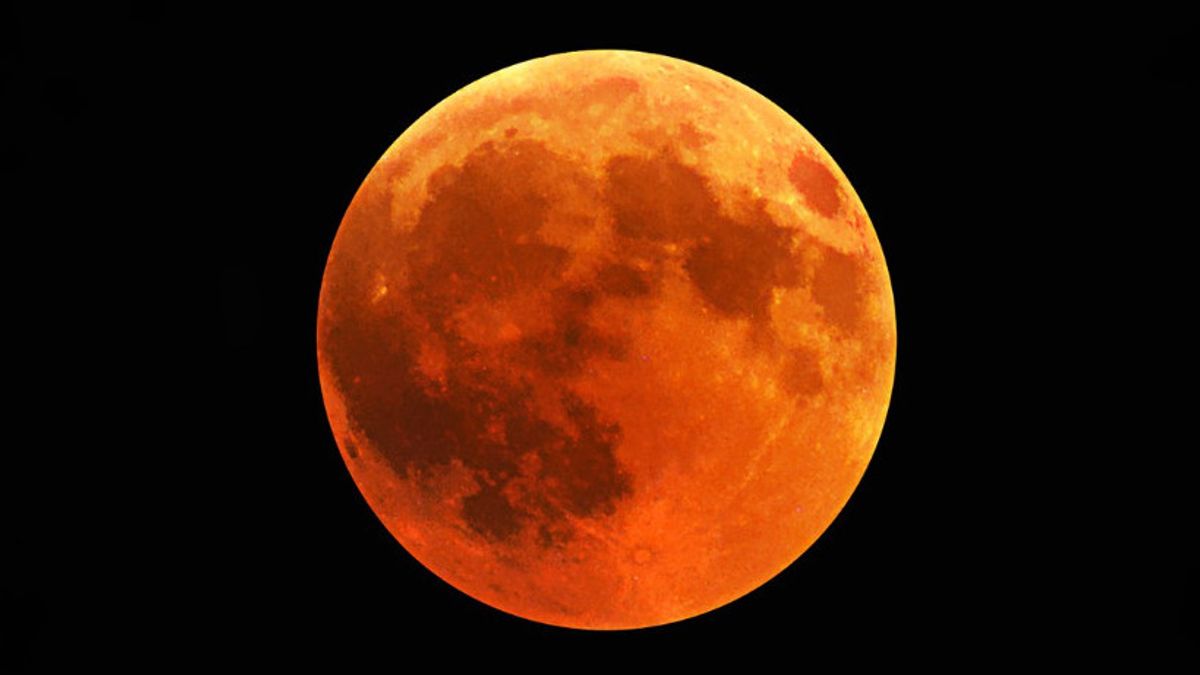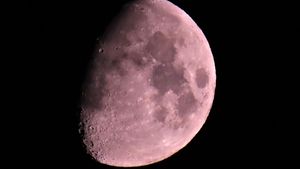YOGYAKARTA - The phenomenon of supermoon sky or super full moon occurs in early August. This phenomenon results in high waves in a number of waters, which can reach 1 to 4 meters. Why are supermoons blowing high waves?
When there is a supermoon phenomenon, coastal communities or those living around the coast are asked to be vigilant. Supermoons can trigger high waves and sea water floods or tidal waves. However, there are still many who do not understand the natural law of the supermoon phenomenon and tides of sea water. So why can supermoon trigger high waves?
Before understanding the laws of attraction of this natural phenomenon, you need to first know what supermoon is. Supermoon is a natural phenomenon when the moon is at its closest distance to the earth or called perigee.
The Moon's very close proximity to Earth makes the Sun's rays appear larger, brighter, and closer than usual. When supermoon occurs, the sun's, moon's, and earth's conditions will lie on a straight line.
The supermoon phenomenon occurs because the moon orbit that surrounds the earth does not form a perfect circle. This condition occurs due to the influence of Earth's gravity. The moon orbit that surrounds the earth is elliptical in shape, so it will look like an elongated circle or oval.
The supermoon phenomenon can cause an effect on Earth due to the Earth-Moon gravitational attractive force relationship. When the Moon is closer to Earth or during perigean period, the Moon's gravitational force will be stronger.
Based on the explanation of the US Institute of Aeronautics and Space (NASA), the Moon and Earth are attracting each other. The pull from the Moon's gravity caused the oceans to stand out on both sides. Both sides are the closest to the moon and the furthest side of the foreigner.
The lumps resulted in high tides. While the low point is where the sea water recedes. NASA says that the pasangan recedes and rising sea water occurs when the Earth's mainland rotates through the bulge due to the gravitational pull of the Moon.
另请阅读:
NASA also mentioned that when the Earth, Sun, and Moon conditions are aligned, the strength of the Moon's gravity will join in making the tide very high. This condition is referred to as the spring tide. In addition, there will be very low tides where sea water is moved.
When the Sun is at the right point or angle to the Moon, the sea water experiences moderate tides. This moderate tidal condition is called thebane tide. Actually, the Earth's tidal bulge is not exactly parallel to the position of the Moon. Because the Moon orbits in the same direction as Earth's rotation. Extra time is needed for any point on planet Earth to rotate and be just below the Moon.
The US Institute of Maritime Affairs and Atmosphere (NOAA) says the waves above the average will occur once a month. This phenomenon occurs when the Moon is at a perigee or closest point to Earth. NOAA also mentioned that about two weeks later the moon will be the farthest from Earth so that the tide of the moon is smaller.
That's a review of why supermoons excite high waves. High waves or tides when a supermoon phenomenon occurs are caused by the stronger gravitational drag of the moon when its position is closer to the earth.
Stay up to date with the latest domestic and other overseas news on VOI. You present the latest and most updated nationally and internationally.
The English, Chinese, Japanese, Arabic, and French versions are automatically generated by the AI. So there may still be inaccuracies in translating, please always see Indonesian as our main language. (system supported by DigitalSiber.id)














